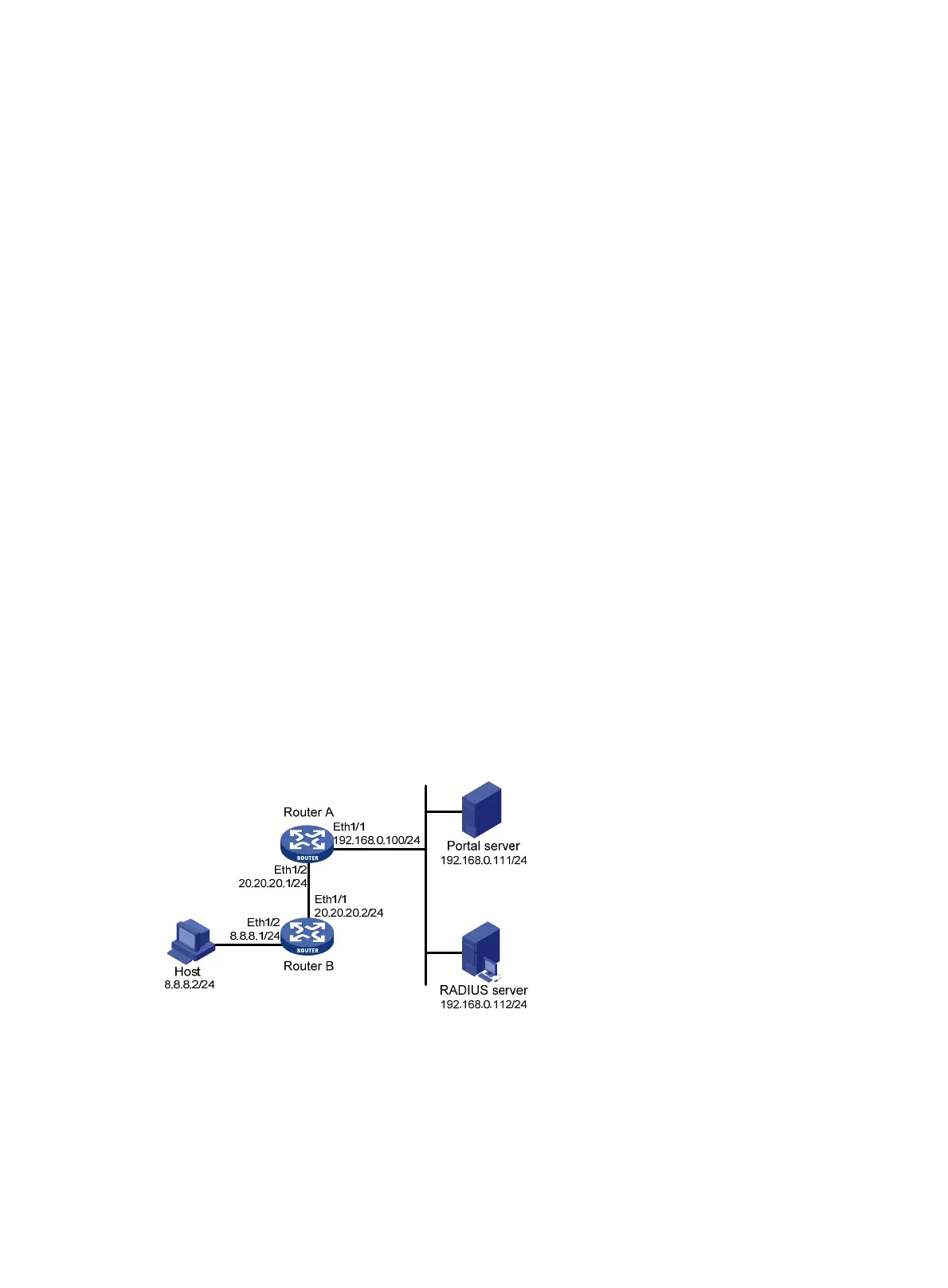318
# Configure the portal server as follows:
{ Name: newpt
{ IP address: 192.168.0.111
{ Key: portal, in plain text
{ Port number: 50100
{ URL: http://192.168.0.111:8080/portal
[Router] portal server newpt ip 192.168.0.111 key simple portal port 50100 url
http://192.168.0.111:8080/portal
# Configure the router as a DHCP relay agent, and enable the IP address check function.
[Router] dhcp enable
[Router] dhcp relay server-group 0 ip 192.168.0.112
[Router] interface ethernet 1/2
[Router–Ethernet1/2] ip address 20.20.20.1 255.255.255.0
[Router–Ethernet1/2] ip address 10.0.0.1 255.255.255.0 sub
[Router-Ethernet1/2] dhcp select relay
[Router-Ethernet1/2] dhcp relay server-select 0
[Router-Ethernet1/2] dhcp relay address-check enable
# Enable re-DHCP portal authentication on the interface connecting the host.
[Router–Ethernet1/2] portal server newpt method redhcp
[Router–Ethernet1/2] quit
Configuring cross-subnet portal authentication
Network requirements
As shown in Figure 101, configure cross-subnet portal authentication on Router A to authenticate
users on the host. Before a user passes portal authentication, the user can access only the portal
server. After the user passes portal authentication, the user can access Internet resources.
A RADIUS server serves as the authentication/accounting server.
Figure 101 Network diagram
Configuration prerequisites and guidelines
• Configure IP addresses for the host, routers, and servers as shown in Figure 101 and make sure
they can reach each other.
• Configure the RADIUS server correctly to provide authentication and accounting functions for
users.

